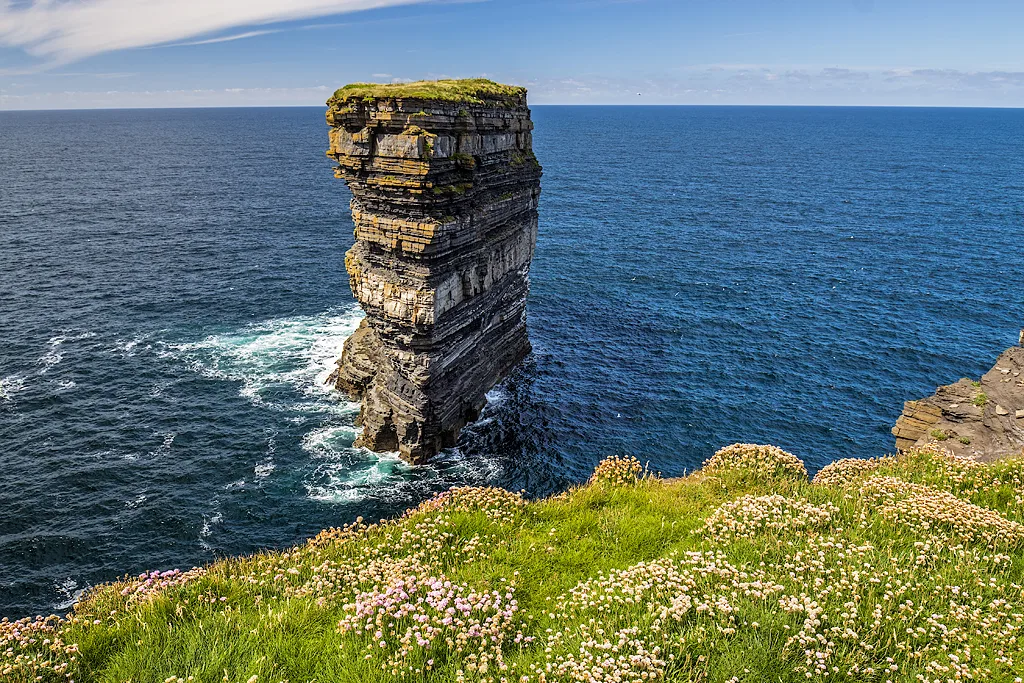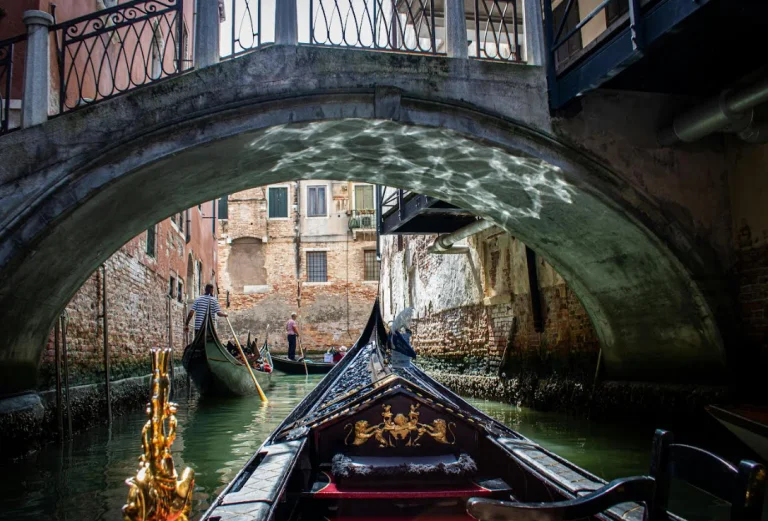Ireland’s wild Atlantic coastline hosts a variety of captivating geological formations, yet few are as arresting or unique as Dun Briste, the iconic sea stack near Downpatrick Head. The towering structure stands proudly off the coast, dominating the landscape and capturing the imagination of visitors and locals alike. Rising dramatically 50 meters from the North Atlantic, Dun Briste is a symbol of nature’s resilience and beauty.
Historical Background
Dun Briste is steeped deeply in local history and legend. Its name, translating from the Irish as “Broken Fort,” speaks directly to the area’s rich heritage and the dramatic event believed to have separated the stack from the mainland. Local historians pinpoint 1393 as the year when a powerful storm severed Dun Briste from Downpatrick Head. This violent storm was powerful enough to reshape the landscape forever, leaving behind the awe-inspiring solitary formation we admire today.
Geological Formation
Geologically, Dun Briste is a remarkable limestone formation, rising about 50 meters above the surging waters of the Atlantic. The stack’s stark vertical cliffs reveal distinct horizontal layers, each representing different geological periods. These layers are primarily sedimentary rocks, which vividly illustrate the Earth’s geological history and the natural processes that shaped them. Continuous erosion by waves and weather continues to sculpt the stack, perpetually altering its form, albeit subtly.
Ecology of Dun Briste
Despite its stark isolation, Dun Briste hosts a surprisingly vibrant ecosystem. The stack’s plateau is blanketed with lush greenery, providing a habitat for numerous bird species. It has become a sanctuary for birds, offering a safe breeding ground away from mainland predators. Species such as puffins, razorbills, and guillemots regularly nest in large colonies, drawing bird watchers and nature enthusiasts year-round. Unique plant species have also been identified on Dun Briste, thriving in an environment untouched by human interference.
Cultural and Mythological Significance
Beyond its geological intrigue, Dun Briste holds significant cultural and mythological importance. One enduring legend attributes its formation to none other than Saint Patrick, Ireland’s patron saint. It is said that Saint Patrick struck the ground with his staff, causing the land to split and leaving the sea stack isolated as we see it today. The narrative intertwines with Ireland’s Christian history, as the nearby mainland area—Downpatrick Head—is named in honor of Saint Patrick, who is believed to have visited the region.
Visitor Experience
Visiting Dun Briste offers an unmatched experience of natural beauty coupled with historical intrigue. The views from Downpatrick Head toward Dun Briste are stunning, providing panoramic vistas of the sea stack and the turbulent waters around it. This viewing spot is also an excellent vantage point to appreciate the sea caves, blowholes, and the rugged coastline shaped by relentless Atlantic waves.
For those keen on exploring further, a network of coastal pathways and trails at Downpatrick Head lead visitors to impressive vantage points, offering various perspectives of Dun Briste. One of the most intriguing features visitors can observe near the cliffs is the Poll na Seantainne, a deep and dramatic blowhole which offers breathtaking views, particularly when ocean waves surge through it.
Safety measures and well-marked paths make the exploration enjoyable yet secure, ensuring visitors can comfortably marvel at this natural wonder. However, it’s important for visitors to remain cautious, as the coastal weather conditions can be unpredictable, and strong winds or rain may render pathways slippery.
Photography and Recreation
For photographers and artists, Dun Briste is a dream subject. The interplay between sunlight, ocean spray, and rugged stone formations provides endless opportunities for captivating photography. Early morning and late evening visits offer particularly dramatic lighting effects, enhancing the mystique of the stack.
The surrounding area also invites a range of outdoor activities including hiking, bird-watching, and even fishing. The rugged terrain and stunning coastline make it an ideal spot for leisurely walks and adventurous excursions alike.
Accessibility and Amenities
Accessibility to Dun Briste and Downpatrick Head is straightforward. Located about an hour’s drive from Ballina, County Mayo, visitors will find a dedicated parking area, well-signposted trails, and informative display panels detailing the geological and cultural history of Dun Briste. A visitor center at Downpatrick Head provides further educational material, making it an enriching destination for both adults and children.
Hotels near Dun Briste
Accommodations in the vicinity are plentiful, ranging from quaint bed and breakfast establishments to luxurious spa resorts. Whether you seek a cozy lodge, a farmhouse stay, or a sophisticated hotel experience, options abound. Visitors planning their stay can explore nearby hotels using this convenient link: Hotels near Dun Briste. This resource offers a comprehensive list of accommodations, helping travelers find suitable lodging options close to this mesmerizing landmark. You can read the reviews of VIO on reddit or at Trustpilot.
How To Get to Dun Briste
Dun Briste is accessible by road from major cities like Dublin or Galway, with Ballina being the closest large town. From Ballina, visitors can take the R314 road towards Ballycastle, then follow clearly marked signs to Downpatrick Head. Public transport options include buses running regularly from Ballina to Ballycastle, from where taxis or local transfers can easily be arranged.







